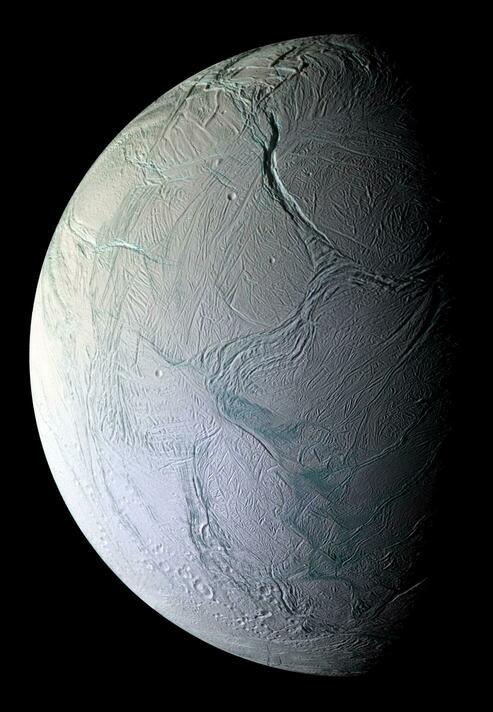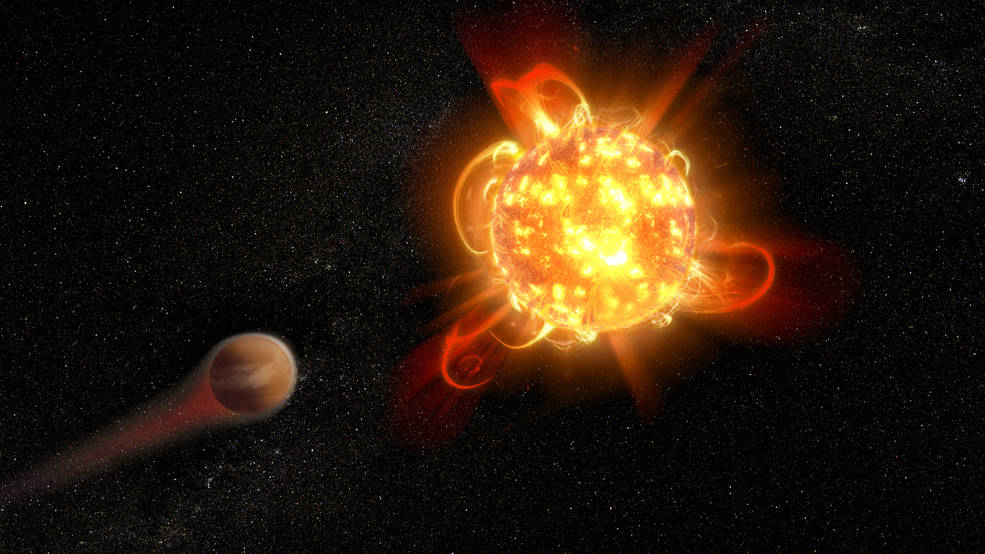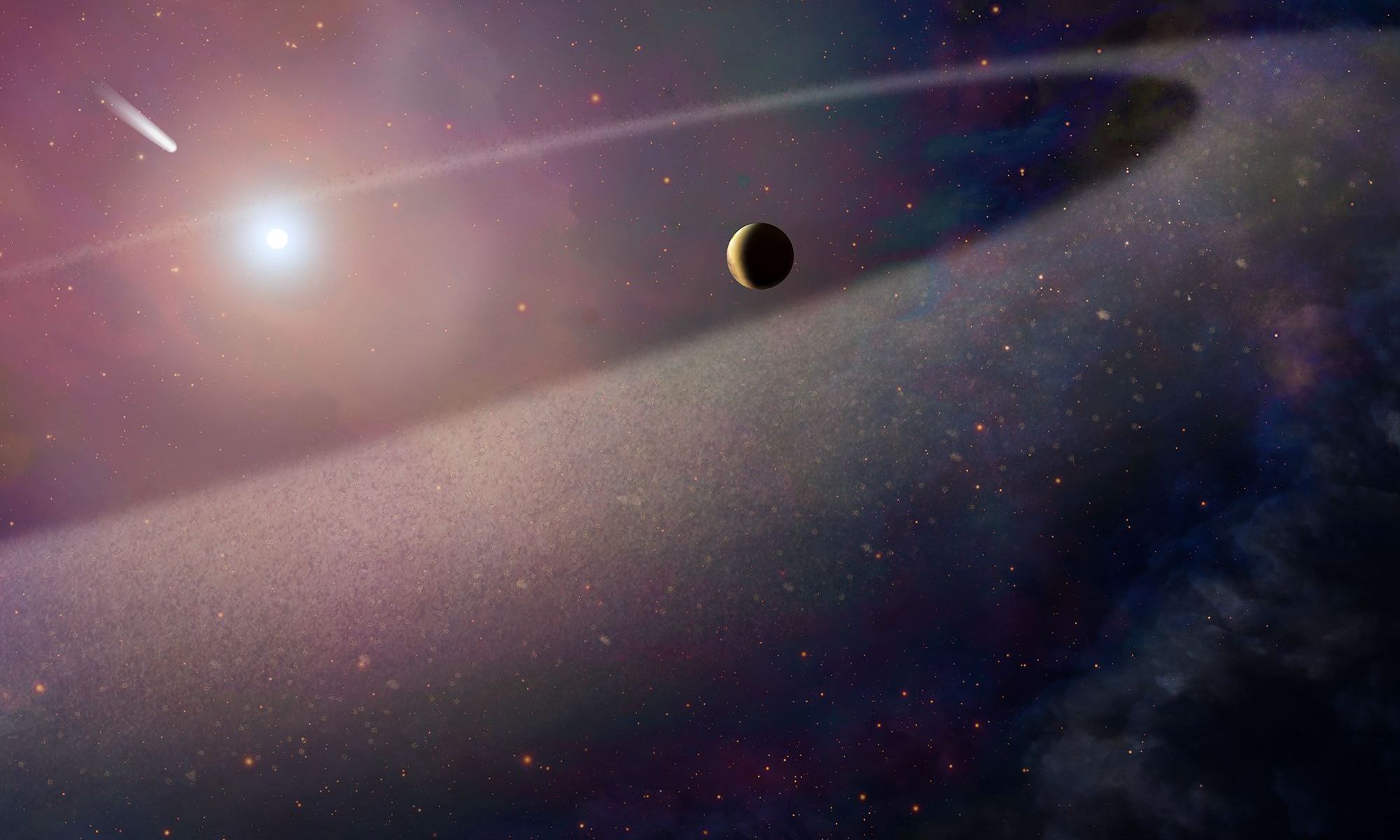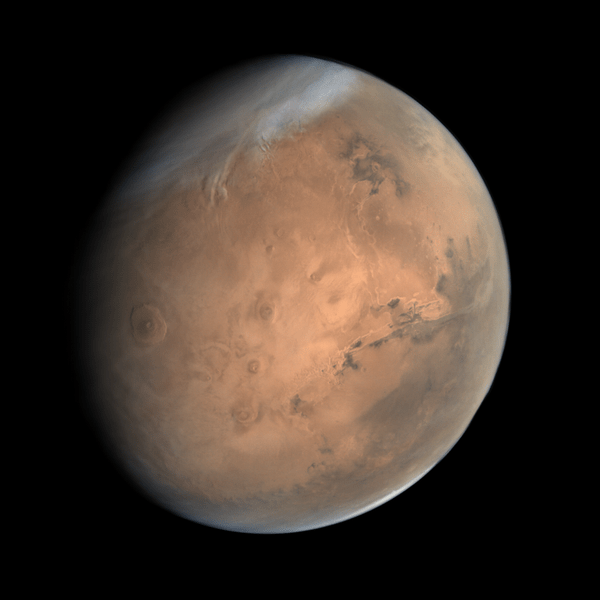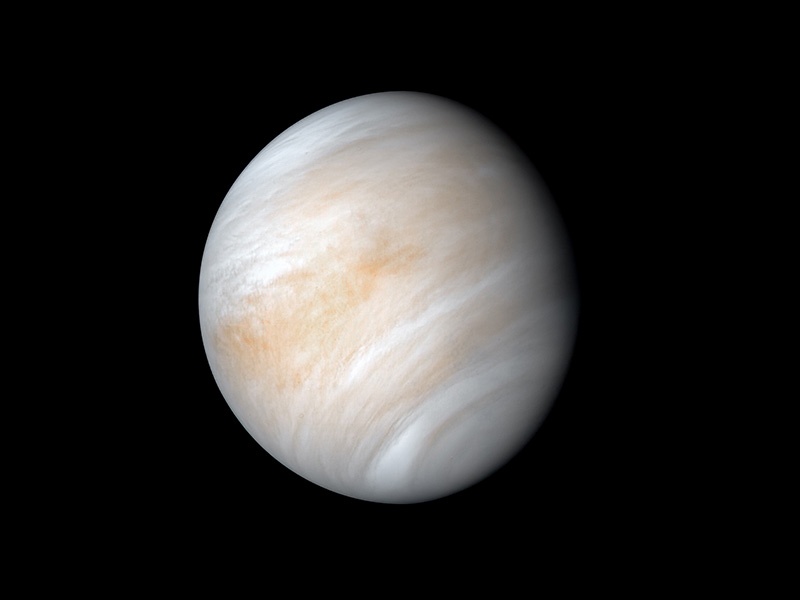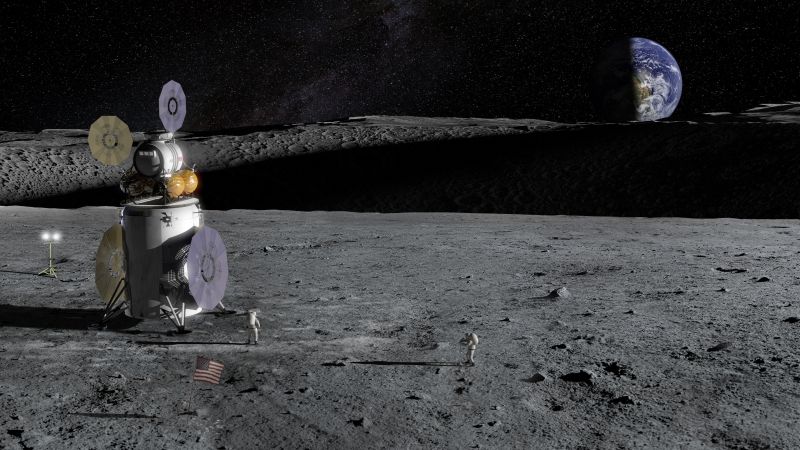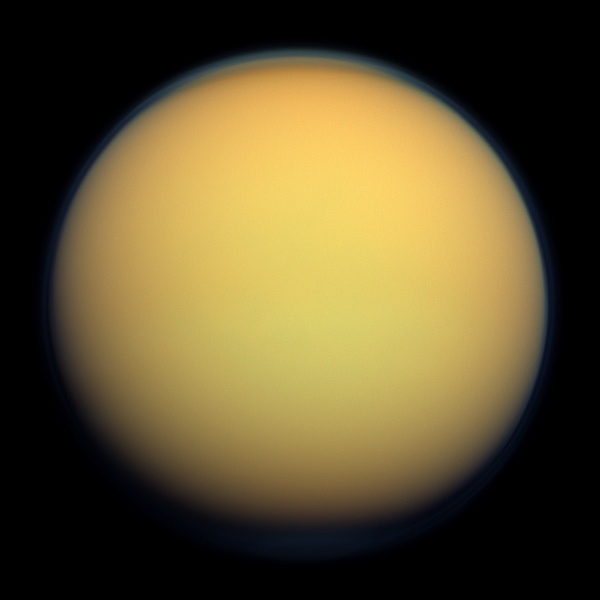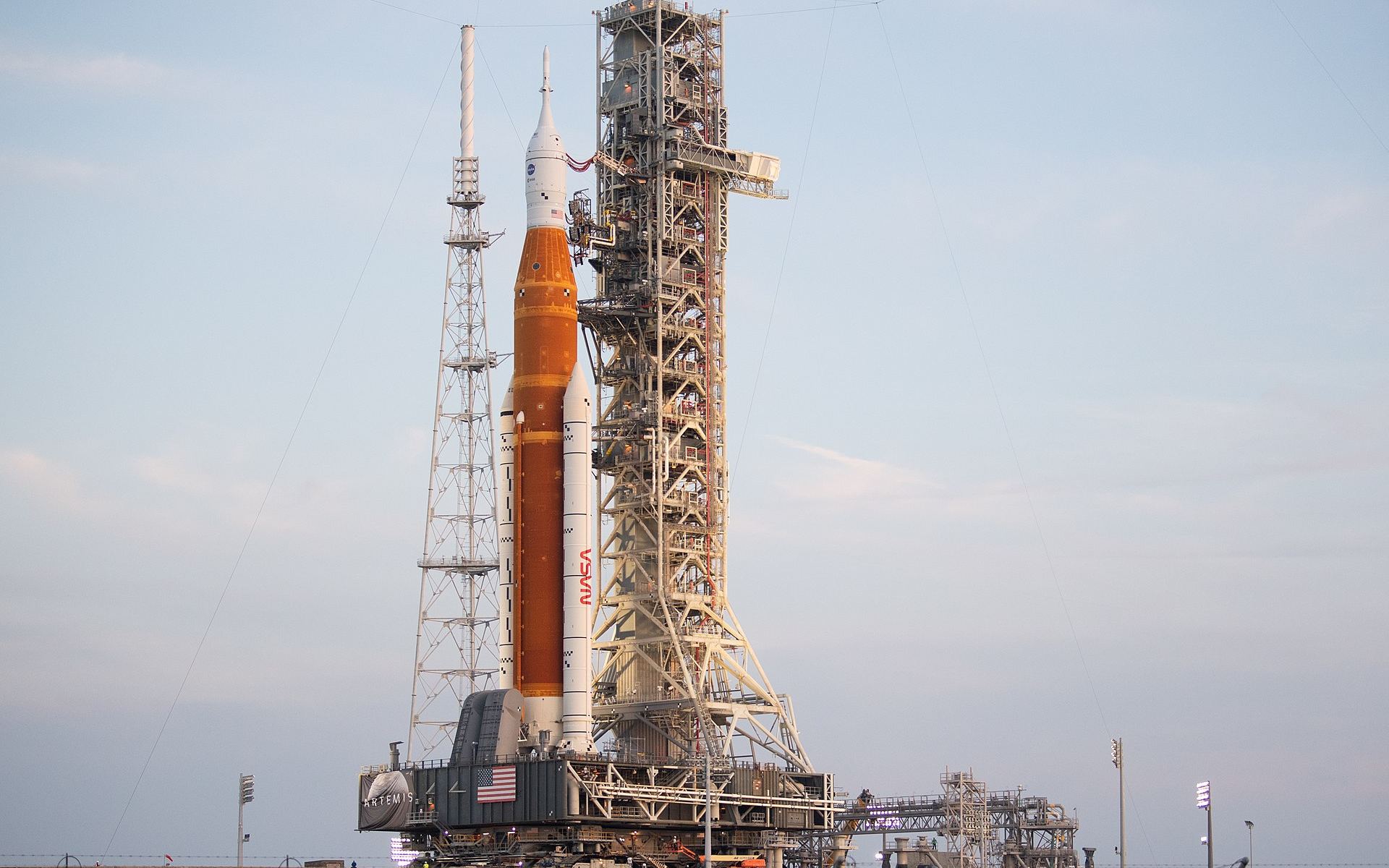We recently examined how and why the planet Mars could answer the longstanding question: Are we alone? There is evidence to suggest that it was once a much warmer and wetter world thanks to countless spacecraft, landers, and rovers having explored—and currently exploring—its atmosphere, surface, and interior. Here, we will examine another one of Saturn’s 83 moons, an icy world that spews geysers of water ice from giant fissures near its south pole, which is strong evidence for an interior ocean, and possibly life. Here, we will examine Enceladus.
Continue reading “Will Enceladus finally answer, ‘Are we alone?’”Another Reason Red Dwarfs Might Be Bad for Life: No Asteroid Belts
In a recent study accepted to The Astrophysical Journal Letters, a team of researchers at the University of Nevada, Las Vegas (UNLV) investigated the potential for life on exoplanets orbiting M-dwarf stars, also known as red dwarfs, which are both smaller and cooler than our own Sun and is currently open for debate for their potential for life on their orbiting planetary bodies. The study examines how a lack of an asteroid belt might indicate a less likelihood for life on terrestrial worlds.
Continue reading “Another Reason Red Dwarfs Might Be Bad for Life: No Asteroid Belts”Webb Can Detect Planets Orbiting White Dwarfs, And Maybe Even See Signs of Life
In a recent study accepted to the Monthly Notices of the Royal Astronomical Society, an international team of researchers led by Texas A&M University investigate how the James Webb Space Telescope (JWST) can detect a variety of exoplanets orbiting the nearest 15 white dwarfs to Earth using its Mid-Infrared Instrument (MIRI) Medium Resolution Spectrograph (MRS). This study holds the potential to expand our knowledge of exoplanets, their planetary compositions, and if they can support life.
Continue reading “Webb Can Detect Planets Orbiting White Dwarfs, And Maybe Even See Signs of Life”Will Mars finally answer, ‘Are we alone?’
We recently examined how and why the planet Venus could answer the longstanding question: Are we alone? Despite its harsh environment on the surface, its atmosphere could be hospitable for life as we know it. Here, we will examine the planet Mars, aka the Red Planet and the fourth planet in our solar system, which has been marveling sky watchers from ancient times to the present day.
Continue reading “Will Mars finally answer, ‘Are we alone?’”Will Venus finally answer, ‘Are we alone?’
We recently examined how and why Saturn’s largest moon, Titan, could answer the longstanding question: Are we alone? It’s the only moon that possesses a thick atmosphere and the only planetary body other than Earth (so far) that has liquid bodies on its surface. These characteristics alone make Titan an enticing location to search for life beyond Earth. In contrast, what if life were to be found in one of the unlikeliest of places and on a planet that is known to possess some of the harshest conditions ever observed?
Continue reading “Will Venus finally answer, ‘Are we alone?’”The Moon is the Perfect Spot for Humanity’s Offsite Backup
In a recent study, a collaborative team of researchers discuss the potential for future lunar settlers to establish a backup data storage system of human activity in the event of a global catastrophe on Earth that could be used to recover human civilization on a post-catastrophe planet. This comes as NASA’s Artemis missions plan to send people back to the Moon for the first time since 1972, coupled with current global events such as the ongoing coronavirus pandemic and the War in Ukraine, with Russian President Vladimir Putin recently threatening nuclear war. Given the current state of world affairs, how important is it to establish a type of off-world data backup?
Continue reading “The Moon is the Perfect Spot for Humanity’s Offsite Backup”Astronomers Simulate the Cat’s Eye Nebula in 3D
In a recent study published in Monthly Notices of the Royal Astronomical Society, an international team of researchers led by Stanford University have produced the first computer-generated 3D model of the Cat’s Eye Nebula, which unveiled a symmetric pair of rings that enclose the outer shell of the nebula. This study holds the potential for helping us better understanding the nebula’s makeup and how it formed, as the symmetric rings provides clues that they were formed from a precessing jet, which produces strong confirmation that a binary star exists at the nebula’s center.
Continue reading “Astronomers Simulate the Cat’s Eye Nebula in 3D”Will Titan finally answer, ‘Are we alone?’
We recently examined how and why Jupiter’s moon, Europa, could answer the longstanding question: Are we alone? While this small icy world gives plenty of reasons to believe why we could—and should—find life within its watery depths, it turns out our solar system is home to a myriad of places where we might find life. Much like how the Voyager missions gave us the first hints of an interior ocean swirling beneath Europa’s outer icy shell, it was only fitting that Voyager 1 also gave us the first hints of the potential for life on Saturn’s largest moon, Titan, as well.
Continue reading “Will Titan finally answer, ‘Are we alone?’”As Hurricane Ian Bears Down on Florida, NASA Decides to Roll Artemis 1 Back to the Assembly Building
As a result of the latest weather predictions regarding Hurricane Ian, NASA managers met on the morning of September 26 and made the decision to roll Artemis 1 back into the Vehicle Assembly Building to protect the rocket from the impending storm, an operation which commenced at 11 pm EDT that evening.
Continue reading “As Hurricane Ian Bears Down on Florida, NASA Decides to Roll Artemis 1 Back to the Assembly Building”Scientists in Antarctica Have Access to Starlink Now. It’s Available on 7 Continents
SpaceX’s Starlink service is now available in Antarctica, according to a tweet from the National Science Foundation on the morning of September 14, stating, “NSF-supported USAP scientists in #Antarctica are over the moon! Starlink is testing polar service with a newly deployed user terminal at McMurdo Station. Increasing bandwidth and connectivity for service support.” SpaceX replied with a quote tweet saying, “Starlink is now available on all seven continents! In such a remote location like Antarctica, this capability is enabled by Starlink’s space laser network.”
Continue reading “Scientists in Antarctica Have Access to Starlink Now. It’s Available on 7 Continents”
